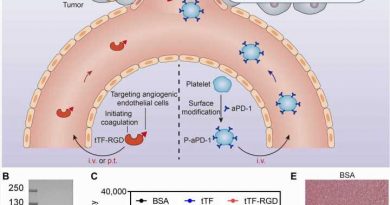Pseudobulbar affect: An often-overlooked condition

“Understanding Pseudobulbar Affect,” the inaugural publication of the new Insights & Implications in Gerontology series from The Gerontological Society of America, addresses an often overlooked or misunderstood condition that has the potential to lead to decreased quality of life for older adults and their caregivers.
Pseudobulbar affect (PBA) is characterized by bouts of uncontrolled crying or laughing that are disproportionate or inappropriate to the social context and are not associated with depression or anxiety. Episodes of laughing or crying are often disconnected to the mood or feelings of the individual, with intense crying or laughing that persists for some time and cannot be suppressed by the patient.
“The symptoms of PBA can be severe, with persistent, unremitting episodes having a sudden or unpredictable onset,” explained George T. Grossberg, MD, a member of the newsletter’s content development faculty who is a professor and director of geriatric psychiatry at Saint Louis University School of Medicine.
PBA symptoms can cause embarrassment for older adults and their family and caregivers resulting in restricted social interactions, withdrawal, and social isolation. Thus, older adults with neurologic disorders and PBA experience additional burden of disease and reduced quality of life.
PBA typically occurs in patients who have a brain injury or neurologic disorder, such as amyotrophic lateral sclerosis (ALS), extrapyramidal and cerebellar disorders (e.g., Parkinson’s disease), multiple sclerosis (MS), traumatic brain injury, Alzheimer’s disease and other dementias, stroke, and brain tumors. The exact cause is unknown, but it appears that the disease or injury disrupts the neural networks and neurotransmitters that are responsible for expression of emotion, especially in the cerebellum.
An estimated 2 to 7 million individuals in the U.S. have PBA. Prevalence varies among populations with various neurologic disorders. For example, PBA has been estimated to occur in approximately 10 percent of patients with MS and up to 50 percent of patients with ALS. Although PBA is common in many neurologic conditions, it is often underrecognized and undertreated. However, health care providers are increasingly recognizing PBA as a behavioral symptom that is connected to brain health, and they are assessing for PBA as part of brain health management efforts.
To help identify patients with PBA, “the assessment of patients with neurologic conditions should incorporate questions about mood and emotion, including assessment of whether responses to certain environments are out of proportion to what would be expected for other conditions such as anxiety and depression,” emphasized Jill Farmer, DO, MPH, a member of the newsletter’s content development faculty who is an assistant professor of neurology at Drexel University College of Medicine.
Care providers (including family members and staff at long-term care facilities who observe patients laughing or crying inappropriately) may consider having the patient evaluated for PBA, especially if the patient has a neurologic condition or brain injury.
Goals of treatment for PBA include reducing severity and frequency of episodes. Behavioral strategies should always be considered for patients and caregivers—particularly when symptoms are mild or do not impact the patient’s quality of life—and may be adequate for treatment of PBA. Pharmacologic options may also provide benefit for appropriate patients. Implementing nonpharmacologic behavioral strategies along with pharmacologic treatment may produce a synergistic effect.
Source: Read Full Article



